This is a guest post from Ian Robinsion.
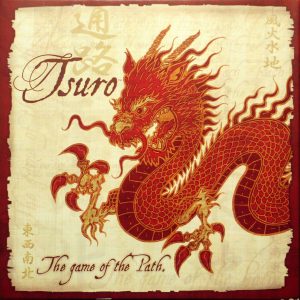 Tsuro is the game in my collection that holds the distinction of having stuck around the longest, with it being the first game ever added to my collection when I got into the hobby back in 2014.
Tsuro is the game in my collection that holds the distinction of having stuck around the longest, with it being the first game ever added to my collection when I got into the hobby back in 2014.
Let’s delve into what’s made this game a mainstay for my group and what lends it such staying power within my collection in an ever-crowded hobby where each game vies for that ever more important shelf space.
Gameplay Overview:
Tsuro is a tile-laying and route-building game for two to eight players that sees each player laying path tiles on a shared board from a choice of three that make up their hand. Once played, the player moves their piece, and any other players’ pieces that connect to their played tile. The game ends, and the winner is declared, when only one player’s piece remains on the board.
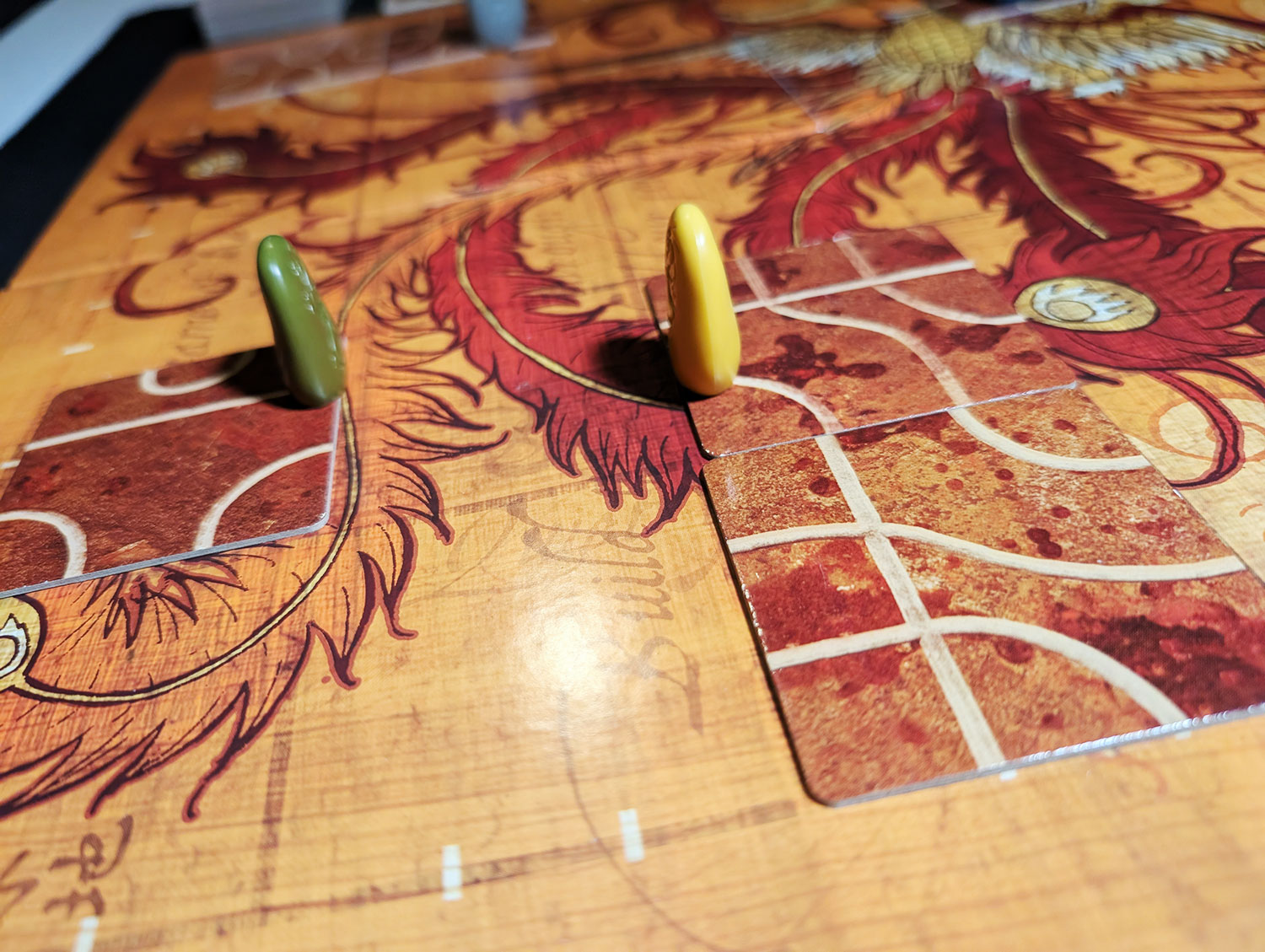
Game Experience:
Tsuro is what many would consider a filler; it’s the kind of game that fits perfectly in the starter game slot or in between two bigger games when you have some extra time on your hands or want to give your brain a break.
This doesn’t mean it’s light on decisions, though, and while more tactical than strategic, player choices do benefit from planning ahead and avoiding other players within the shared space. If you do find yourself too close to someone else and they’re able to place a path tile that connects to both their piece and yours, this could lead to disastrous results. You just might find yourself getting flung off the edge of the board far sooner than you planned and being out of the game. Because Tsuro, unfortunately, includes player elimination as a mechanic. As we all know, player elimination never feels good.
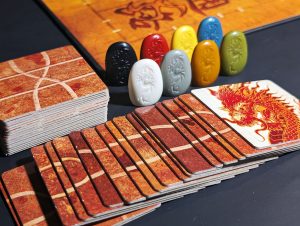
But as an abstract filler that plays within thirty minutes, no matter the player count, this worst thing about the game tends to be offset by fast play. Plus, the fact that you won’t be the only player knocked out of the game, since multiple players could get knocked out in one move or in quick succession as the game moves on, softens the blow.
More often than not, you’ll find players planning their moves out. On any given turn each of the three tiles in a player’s hand has four different path configurations to choose from. Players place their tiles, someone wins and the rest all lose, and then everyone immediately wants to set the game back up. It makes Tsuro one of the great gateway games. Easy to learn (the rules are literally on one page), quick to play, and no one game ever feels the same because of how the tiles come out without ever feeling unfair.
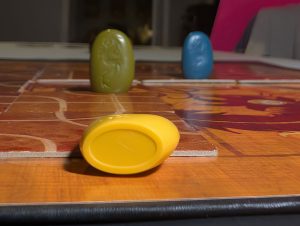
If your group is more into games with low player interaction, try Tsuro as a two-player game. At two, the wide open board allows for a slow burn game where ultimately the winner is decided more by bad play than being messed up by other players. At higher player counts, it can get a little chaotic due to the constantly shifting board state. This leaves Tsuro having a sweet spot in the middle of its suggested player count.
At its heart, Tsuro is a fairly light abstract tile-laying game whose component quality (nowadays at least) is decent, with some beautiful, if sparse, artwork. It’s not a game that would particularly stand out on a shelf in your local game store. But within its box lies a hidden treasure that brought me into this hobby. I had played board games before Tsuro, even having played (Settlers of) Catan a couple of times, but none really ever made me want to dive deeper until Tsuro, which captured me enough to go out and buy my own copy.
A game all about placing paths that guide your piece, and sometimes the other players pieces, around the shared board until one of the players is the last one standing serendipitously ended up being the game that guided me deeper into this hobby and to have outlasted any other game through the many culls of my collection.
Final Thoughts:
Tsuro is a fantastic abstract game that plays quickly at any player count from two to eight and is perfect for introducing newer gamers into the hobby. If it weren’t for the player elimination aspect of the game, I believe Tsuro would be a perfect filler.
Final Score: 4.5 Stars – A light game that still retains nice depth and thoughtful decisions that will shine in between those bigger games.
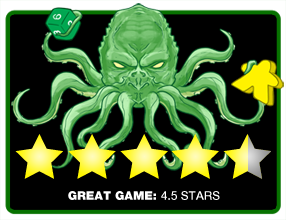 Hits:
Hits:
• Light but not lacking depth.
• Fantastic gateway game with staying power.
• Quick playtime means there’s time for plenty of rematches.
Misses:
• Player elimination keeps people from enjoying all the action.
 About the Author: A board game and movie enthusiast whose inclinations in both hobbies tend to delve into the weird, wacky and unusual no matter how much he resists. Ian is also a coffee addict and, with his wife Iris, is a parent to two shih tzus, an adorable black cat, and a beard dragon.
About the Author: A board game and movie enthusiast whose inclinations in both hobbies tend to delve into the weird, wacky and unusual no matter how much he resists. Ian is also a coffee addict and, with his wife Iris, is a parent to two shih tzus, an adorable black cat, and a beard dragon.




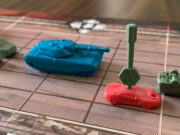
















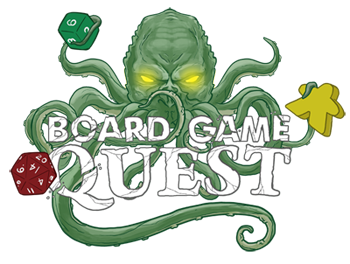
Tsuro is a fantastic game! I wholeheartedly agree with your review. I’ve never played the physical version, but the digital version is very well done (get it on iOS and other platforms). It is a go-to game for my son and I, particularly when traveling.
My big regret with Tsuro is that I didn’t back the luxury edition. I sooooo wanted that one – just couldn’t stomach the outrageous shipping costs. Maybe I’ll find a reasonably priced used copy one day…
I played this a bunch of times, and all too often it ended in a tie. I much prefer the 2-4 player Indigo (now rebranded as “Butterfly Garden”) for no player elimination and more interesting strategies.